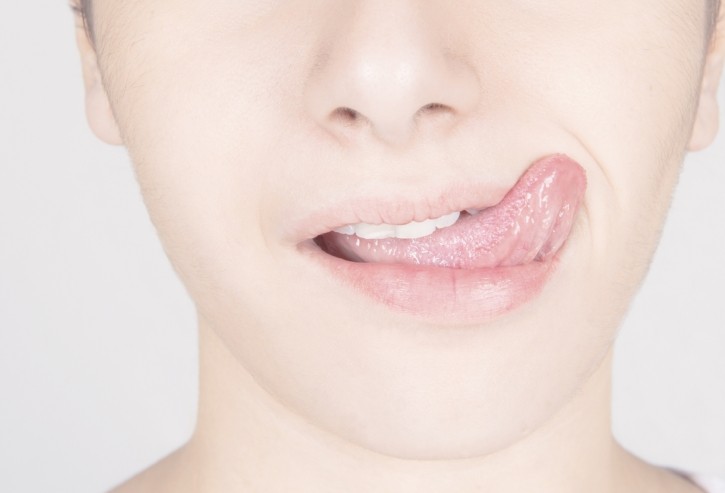Food futures: TasteClouds, virtual food & EMS drive taste & texture development

A number of teams have been working on fooling the brain into tasting foods that aren’t present in the mouth.
It is hoped these innovations could prove useful for those trying to reduce their intake of unhealthy foods or beverages linked to chronic diseases like obesity and diabetes.
One piece of research involves the use of electronics to thermally stimulate receptors to recreate a sweet flavour.
Showcasing their efforts at the 2016 ACM User Interface Software and Technology Symposium (UIST) in Tokyo, one team presented a method that applied a rapid heating and cooling stimuli to the tongue.
A device was used that included Peltier elements that prevented overheating by transferring heat from one side to another.
Subjects were instructed to insert the tip of their tongue onto a small pad contained on the device, which targeted the sensory taste receptors known to respond to temperature changes.
Initial results suggested that, while around half of the subjects recognised the sweet sensation, the taste’s intensity was considered mild or barely detectable levels, when assessed on a 5-point rating-scale.
Some participants also reported an inconsistent experience, perceiving mixtures of taste sensations such as sweet and minty.
‘Augmenting real-world flavours’
“The key challenge here is to make these stimuli consistent and the perception of taste sensations clear,” said co-study author Nimesha Ranasinghe from the Keio-NUS CUTE Center, National University of Singapore. “It needs more controlled experiments to understand human taste perceptions.”
“By virtually simulating the sensation of sweetness, we will be able to augment real-world flavours by virtually overlaying the simulated sweetness while users consume food and beverages,” he added.
According to Ranasinghe, a similar system embedded on a personal glass or mug would enable a user to consume beverages with lower sugar content. This could maintain the same sweet palatability of similar products with higher sugar content.
“The challenge is that currently, neither medical, clinical, or neuroscience have a complete model of how taste work, with enough theory and model that we can apply different parameters,” added Dr Ellen Yi-Luen Do, director of ACME Lab - ACME Creativity Machine Environment at Georgia Tech University.
“We are actively working with design and manufacturing to see if we can produce nicely integrated, food safe utensils for the general public.”
“What if we could share taste experience by sending the 'recipe' over the internet?” she added. “What if, similar to SoundCloud, we could have a TasteCloud, where people can experience, share and create tastes from around the world, sharing recipes of unique tastes from different culture and cuisine? These are all exciting things to explore.”
Jaw-dropping action
In a similar vein, more research highlighted at UIST demonstrated how electrical stimulation could successfully mimic texture sensations such as hardness or chewiness as a subject bites into food.
An Electric Food Texture System, which applies electrical muscle stimulation (EMS) to the masseter muscle located in the jaw, showed that strong EMS was able to exert a more ‘hard’ texture.
Similarly, the longer the duration of EMS was the more elastic the virtual food texture appeared to be.
The system is made up of the ‘bite detection’ component, ‘food texture’ database, and an electric stimulation module. EMS is synchronised with the user’s bite.
“The combination of EMS and chewing sounds are very effective,” said Dr Arinobu Niijima, co-creator of the system, who is based at The University of Tokyo.
“Our experiments have evaluated the reality of virtual food texture for four kinds of food; gummy candy, chocolate, potato chips, and rice crackers. The current system can present virtual food texture such as hardness, chewiness (elasticity), and adhesiveness by controlling intensity, duration, and timing of EMS.
Niijima added that the system would be suitable for people who couldn’t eat food satisfactorily because of weak jaws, allergies, and a restricted diet.
“Sick people who have to eat porridge every day will enjoy every dining with the system,” he said. “It has the potential to be used in many kinds of applications. For example, it may be possible to enhance food texture such as chewiness and present new food texture such as crisp soup.”
“In future work, we will create more complex textures by using multiple EMS.”
Source: Proceeding UIST '16 Adjunct Proceedings of the 29th Annual Symposium on User Interface Software and Technology
“Virtual Sweet: Simulating Sweet Sensation Using Thermal Stimulation on the Tip of the Tongue.”Published online ahead of print, doi.org/10.1145/2984751.2985729
Authors: Nimesha Ranasinghe, Ellen Yi-Luen Do
Source: Proceeding UIST '16 Adjunct Proceedings of the 29th Annual Symposium on User Interface Software and Technology
Published online ahead of print, doi.org/10.1145/2984751.2984768
“Study on Control Method of Virtual Food Texture by Electrical Muscle Stimulation.”
Authors: Arinobu Niijima, Takefumi Ogawa



























